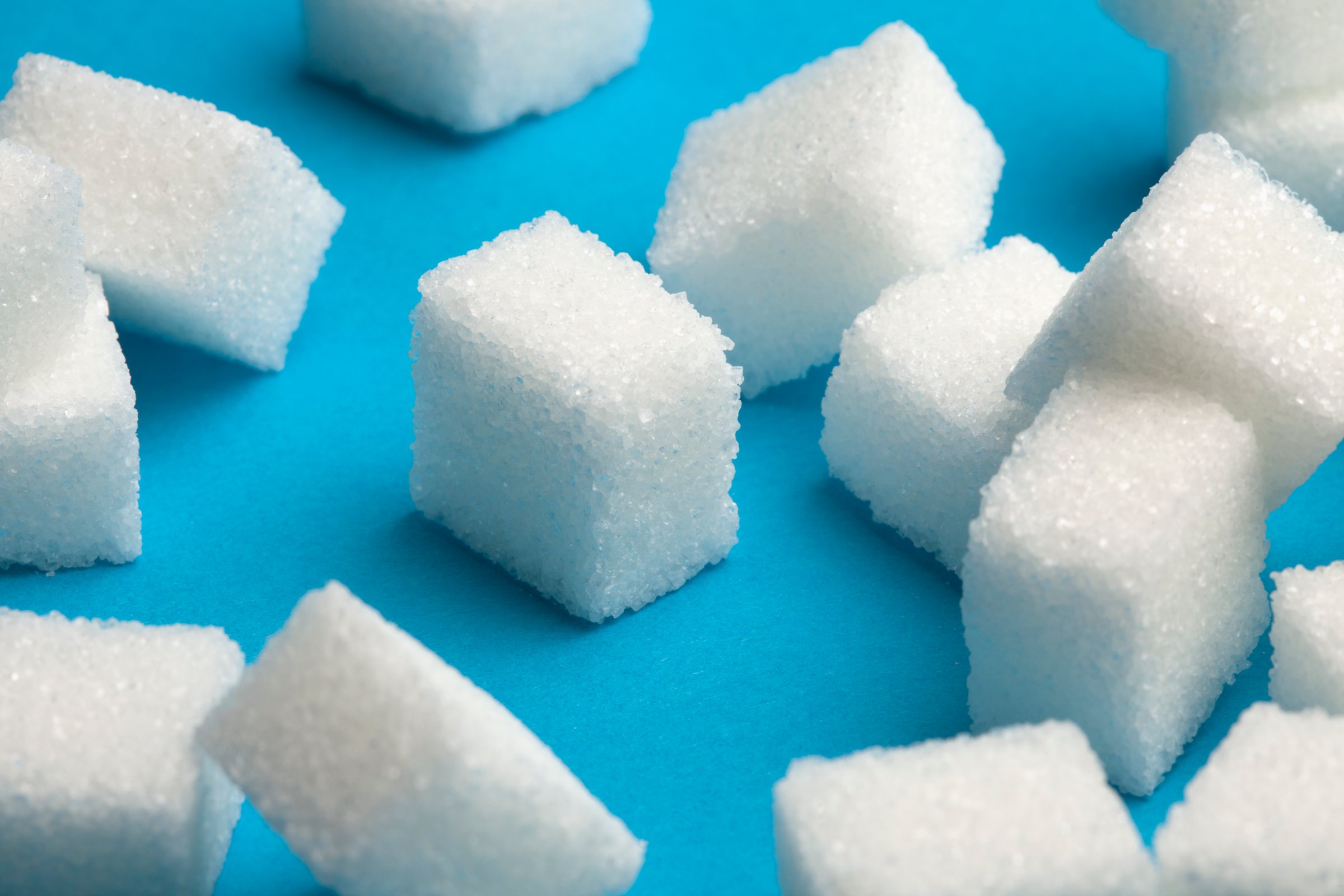
The World Health Organization issued guidelines Tuesday encouraging people to limit sugar intake to no more than 10% of the calories their daily diet.
Keeping to the limit, which doesn’t include sugar found in fruit and vegetables, would help curb obesity, tooth decay and other problems caused by excess sugar intake, officials from the agency said. Taking things even further, WHO suggests limiting your sugar to below 5% of daily calories for even more health benefit. The U.S. Food and Drug Administration (FDA) estimates that the average American consumes 16% of their daily calories from added sugar.
But what does 16% of daily calories in sugar look like? And how can you cut down to 10% or less?
1. Learn how to switch grams into sugar packets. The first place to start is the nutrition facts on the back of the product, which tells you how many grams of sugar are in a given product. Of course, since most people have no idea what a gram of sugar looks like, it helps to have a quick conversion in your own head. One packet of sugar—the kind people put in their coffee—is typically 4 grams.
2. Find hidden sugar. Next, you want to realize that most of the sugar Americans consume in a day is not the granulated white stuff, but hidden sugars in everything from low-fat salad dressing and BBQ sauce to store-bought bread, yogurt and breakfast cereal. These hidden sugars add up.
3. Check your sugar calories. Keeping all that in mind, you want to figure out how many calories you’re getting from all that sugar. A rough, if inexact, way to do that math is like this: Every packet of added sugar equals about 16 calories. Assuming you eat 2,000 calories per day, give or take, that means no more than 200 of your calories—or 100 if you’re being strict—should come from sugar. Either way, you shouldn’t eat or drink more than the equivalent of 10 of those in any given day.
4. See what those sugar tallies look like. Nutrition labels leave out the percentage of daily sugar a product contains. In fact, the FDA, which oversees implementation of the label by food manufacturers, has no official guideline about how much sugar you should consume, and the USDA says simply “Consume fewer foods with … added sugars,” and leaves it at that. To help you understand how much sugar you should be eating according to the WHO, TIME used information from nutrition labels to give you a sense of how quickly you can hit that 10% cap. All figures assume you’re eating a 2,000 calorie daily diet:
DINNER OUT
If you go to Olive Garden and have the citrus chicken sorrento entree with a 20 oz. can of coke you’ll already have consumed 275 calories of sugar. That’s 14% of the total calories and 40% more than the total sugar most people should consume in a day. Add the 162-calorie Olive Garden lemon cream cake to your meal and, in sugar alone, you’ll have eaten nearly a quarter of the total calories you’re supposed to consume throughout the day.
AN AFTERNOON SNACK
A vanilla latte and a doughnut would cost you 201 sugar calories, which is just over the total recommended max.
A LOW-FAT BREAKFAST
Think you’re fine with a fruit-on-the-bottom yogurt and a coffee with one sugar packet? You probably are, assuming you don’t eat sugar again for the rest of the day—which is unlikely. That combination is 181 calories of sugar, or 9 percent of your recommended total calorie intake.
A GIANT BREAKFAST
Every now and then you may want to treat yourself and ditch that healthy breakfast. If you have French toast with maple syrup, you’ll easily hit 182 calories of sugar, which is just shy of the recommended total. Add a cup of OJ and you’re easily way over the daily recommended value before you’ve even left the house for the day. Or, if you’re at a chain like IHOP, make sure you avoid some of the more creative French toast twists. The restaurant’s Peach Vanilla Stuffed French Toast, for instance, contains 325 calories of sugar—that’s a day and a half of the recommended value.
A POST-WORKOUT SNACK
Want hydrate and enjoy a quick energy hit after that work out? A large bottle of Gatorade and a Clif Bar will load you with 292 calories of sugar, or nearly 15% of your total recommended calorie intake for the day—and more than your sugar intake, too.
More Must-Reads from TIME
- Why Trump’s Message Worked on Latino Men
- What Trump’s Win Could Mean for Housing
- The 100 Must-Read Books of 2024
- Sleep Doctors Share the 1 Tip That’s Changed Their Lives
- Column: Let’s Bring Back Romance
- What It’s Like to Have Long COVID As a Kid
- FX’s Say Nothing Is the Must-Watch Political Thriller of 2024
- Merle Bombardieri Is Helping People Make the Baby Decision
Write to Justin Worland at justin.worland@time.com